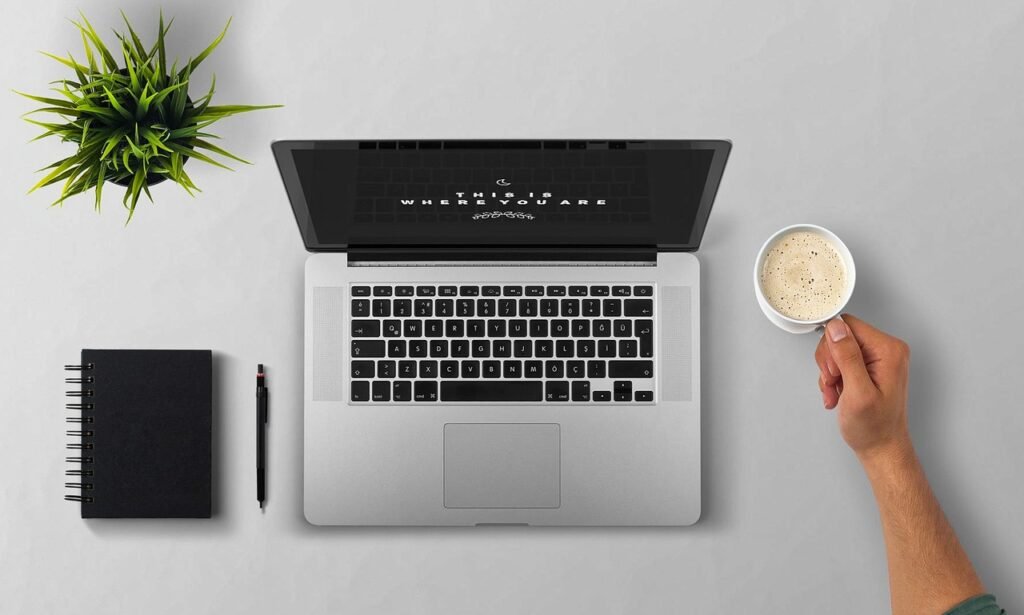Physical Address
304 North Cardinal St.
Dorchester Center, MA 02124
Physical Address
304 North Cardinal St.
Dorchester Center, MA 02124

Have you ever wondered whether using an ai watermark remover is safe—or even legal? With ai watermarking becoming more common across images, videos, and even text, many people are searching for ways to bypass it. From students worried about plagiarism checkers to marketers who want clean, attribution-free content, the demand is growing. But here’s the thing—just because you can remove watermarks doesn’t always mean you should.
AI watermarks were designed to bring more transparency to the growing wave of AI-generated content. They help platforms and readers check if ai wrote this, maintain accountability, and fight misinformation. But as with every new technology, there’s a growing interest in ways to outsmart these systems. This has also led to a rise in ai content detectors—tools that claim to tell you how to tell if ai wrote something, making the whole process a bit of a cat-and-mouse game.
So, why is everyone suddenly talking about watermark removers? The truth is, people have very different reasons for using them. Some just want to edit a photo they own, others want to clean up a video, and a few might be trying to hide the fact that AI helped them write that article or essay. The technology can feel empowering—but it comes with strings attached.
In this article, we’re going to explore the hidden side of this trend. We’ll break down five surprising risks of ai watermark remover tools that most people don’t think about—risks that can range from legal trouble to harming your credibility. If you’re curious about how these tools work, whether they’re safe to use, and what better options might exist, you’re in the right place.

Ever come across an ai watermark remover video and wondered how it actually works? Before we dive into that, let’s talk about what ai watermarking is. At its core, ai watermarking is the process of embedding invisible or hard-to-remove marks into AI-generated images, videos, or even text. These marks help platforms and readers check if ai wrote this and trace where the content came from. They also help keep digital spaces transparent and fight misinformation.
So, how do these removers work? An ai watermark remover uses machine learning models to detect and erase those hidden marks, restoring the content to what looks like a “clean” version. In the case of images, it can smooth over the pixels where the watermark was located. For videos, it uses frame-by-frame analysis to remove patterns without leaving visible traces. For text, some tools rephrase sentences slightly to make them harder for ai content detectors to flag—making it trickier for people who want to know how to tell if ai wrote something.
But not all uses are shady! People often use watermark removers for completely legitimate reasons—like restoring old family photos, removing a logo from a stock image they have licensed, or cleaning up a video for a presentation. If you’ve ever wondered what is watermarking a photo and why it matters, it’s simply about marking ownership or authenticity—and sometimes, people have the right to remove those marks when they own the content.
Understanding these tools is the first step before deciding whether using them is the right choice for you.
Why is everyone suddenly talking about ai watermark remover tools? The answer lies in how fast ai watermarking and traceability requirements have grown. As AI-generated content floods the internet—everything from images and videos to full articles—platforms like OpenAI, Google, and Adobe have started embedding hidden watermarks or digital signatures into the content they generate. This allows them to verify where a piece of content came from and ensure that what we see online remains authentic.
These invisible markers are part of a bigger push toward transparency. If a company, teacher, or news outlet wants to check if ai wrote this, these watermarks make it possible. It’s not just about catching plagiarism; it’s about making sure information stays trustworthy in an era where fake news and AI deepfakes are becoming harder to spot.
Alongside watermarking, we’ve also seen a rise in ai content detectors. These tools scan text to predict how likely it was written by AI, helping users figure out how to tell if ai wrote something. But this has also sparked an arms race. Some people use ai watermark remover tools to bypass detection—especially students or marketers who don’t want their content flagged.
This push and pull between transparency efforts and attempts to bypass them is shaping the future of AI ethics. Understanding why watermarking exists helps us see why removing it isn’t always a good idea.

Using an ai watermark remover might seem like an easy way to get a cleaner image, video, or piece of text — but it’s not without consequences. AI watermarking exists to keep digital content traceable, so when we strip those marks away, we also remove an important layer of trust and accountability.
In fact, watermarking is now becoming a key part of AI ethics and traceability requirements worldwide. Platforms like OpenAI, Google, and Adobe are already working on systems to help users check if AI wrote this and verify whether something was AI-generated.
Before you use an ai watermark remover tool, here are five surprising risks you should know — from legal problems to damaging your reputation.
One of the biggest risks of using an ai watermark remover is running into copyright issues. Watermarks exist to signal ownership. Removing them can be seen as tampering with intellectual property, which is illegal in many countries. In the U.S., the DMCA specifically prohibits the removal of copyright management information — including digital watermarks.
This becomes even trickier when people ask, can you copyright ai art? The answer is complex. In most cases, whoever owns the rights to the AI-generated content still controls how it is used. If you use an ai watermark remover to strip that ownership mark away, you could face legal action.
Businesses need to be especially careful. Using unlicensed content without permission can result in takedown notices, fines, or lawsuits. It can also harm brand reputation — nobody wants to be accused of stealing creative work.
If you want clean, watermark-free content, it’s safer to request permission from the creator or use royalty-free resources from sites like Pixabay or Pexels. That way, you avoid copyright issues while still getting the quality you need.
AI watermarking was designed to help people check if ai wrote this and verify content sources. When someone uses an ai watermark remover to erase these signals, it breaks the chain of trust. This is especially risky for researchers, journalists, and educators who depend on transparent, verifiable data.
Traceability ensures credibility. If a report includes AI-generated data, but the watermark is removed, reviewers may no longer trust the findings. In some cases, regulators may require traceability in published work. Removing those signals could lead to compliance problems.
This is where ai tracing becomes important — it records when and how AI was used, allowing others to validate results. For brands, transparency about AI-generated content helps build trust with customers. Without it, people might feel misled, especially if they discover later that a piece of content was AI-made.
In short, authenticity matters. Removing watermarks may solve a short-term problem, but it can cause long-term damage to trust and credibility. Instead of using an ai watermark remover, consider leaving the watermark in place or clearly disclosing when AI was used.
When you remove ai watermarking, you also make harmful content harder to track. These digital fingerprints are there to help platforms and researchers fight misinformation and malicious use.
Deepfake videos are a good example. Without watermarks, they become harder to identify and can spread quickly online. This makes it more difficult for users to know how to tell if ai wrote something or created a video.
This raises big ethical questions. Do we have a duty to keep AI-generated content traceable? Many experts say yes — especially when it comes to politics, news, or education. When we use an ai watermark remover, we risk erasing the very tools designed to keep society informed and safe.
For everyday users, the impact might feel small, but on a global scale, removing these protections makes disinformation harder to fight. The safer path is to keep watermarks intact whenever possible. They’re not just marks — they’re signals that help audiences check if ai wrote this and decide whether to trust what they’re seeing.
An ai watermark remover can sometimes make ai content detectors more likely to flag your work. When you remove or alter watermarks, the underlying text or image may change slightly — enough to confuse detection tools.
This is especially frustrating for students. Imagine submitting an essay only to have it flagged because a remover tool rephrased certain lines. If you’ve ever wondered how to check if ai wrote something, you know these tools aren’t perfect. They can misinterpret edits and create false positives.
For journalists and professionals, this can waste time during reviews or compliance checks. Editors may ask for proof that your work is original. That means extra stress and more back-and-forth.
The simplest solution is to work with detection systems, not against them. Keep watermarks in place or disclose AI use openly. That way, if someone tries to check if ai wrote this, there’s no confusion — and no unnecessary hassle.
While ai watermark remover video tools claim to give “clean” results, they often introduce new problems. You might notice blurring, ghosting, or strange artifacts where the watermark was removed.
For brands or marketers, this can hurt the professional look of your campaigns. Even free ai video generator without watermark tools can produce low-resolution outputs or add glitches that look worse than the original watermark.
In many cases, fixing these issues manually takes longer than simply licensing clean content upfront. If you need high-quality visuals, platforms like Adobe Stock or Freepik are better options. They offer watermark-free downloads legally and in high resolution.
Ultimately, an ai watermark remover might seem like a quick solution, but it can downgrade the quality of your content and waste valuable time. For a polished, professional result, it’s smarter to start with legitimate, high-quality resources.

Instead of taking the risk of using an ai watermark remover, you can choose safer and more professional ways to get watermark-free content while staying ethical and legally compliant. These alternatives not only save you trouble but also help build trust with your audience.
The easiest solution is to start with properly licensed media. Free stock image and video platforms offer thousands of high-resolution files that can be used without worrying about copyright. For businesses or creators who need premium-quality visuals, paid options allow you to download watermark-free assets legally and instantly. This approach eliminates copyright issues and ensures your work looks professional from the start.
If you generate your own media, look for the best free ai content generator tools that let you export clean files right away. Many modern AI platforms now allow watermark-free outputs in both free and paid plans. Experimenting with different ai platforms helps you find the one that matches your style and workflow while saving you the time of manual editing or cleanup.
Transparency is becoming more important as ai watermarking becomes a standard part of digital publishing. If you use AI to create text, images, or videos, consider including a simple note or disclosure. This helps readers feel informed and avoids future confusion if someone tries to check if ai wrote this. Being upfront shows responsibility and strengthens your reputation.
Keeping a record of when and how you use AI tools is another smart practice. If ai content detectors ever flag your work or if someone needs to know how to tell if ai wrote something, you’ll have a clear history to reference. This habit is especially useful for students, educators, and businesses that want to maintain compliance with traceability requirements.
By following these approaches, you can avoid unnecessary risks, produce professional-quality work, and maintain credibility — all without depending on risky watermark removal methods.
Using an ai watermark remover might seem like a quick fix, but as we’ve explored, it comes with hidden risks that can cost you more than you expect. From legal issues under copyright laws to breaking the trust that ai watermarking was designed to protect, the downsides are too big to ignore. When you remove watermarks, you make it harder for others to check if ai wrote this and verify where your content came from. That can hurt your credibility with readers, customers, and even search engines.
We also saw how watermark removal can create security concerns, encourage misinformation, and confuse ai content detectors, leading to false positives that may harm students, writers, and professionals. On top of that, poor-quality results from an ai watermark remover video tool or free ai video generator without watermark software can hurt the visual impact of your content.
The safer path is to focus on transparency, licensing, and responsible AI use. Choose trustworthy tools, disclose when you use AI, and keep a simple record of your workflow. This makes it easier for anyone to know how to tell if ai wrote something, and it keeps your work credible and compliant with growing traceability requirements.
By making these small changes, you protect your reputation, avoid copyright issues, and ensure your content stays professional — all without depending on risky watermark removal methods.
1) What is AI watermarking?
AI watermarking embeds visible or invisible markers in AI-generated media so creators, platforms, and readers can verify provenance and discourage misuse. At iccebergaicontent.com, we encourage responsible AI use and transparency in all forms of digital content.
2) Is it legal to remove AI watermarks?
Often no. Removing watermarks can violate copyright or anti-circumvention rules (like the DMCA) and damage creator rights. Our experts at iccebergaicontent.com recommend using licensed assets or seeking permission to stay compliant.
3) How can I check if AI wrote this?
Look for platform disclosures, request source files, and review metadata or provenance logs. Detectors can help check if AI wrote this, but no tool is 100% accurate.
4) Are AI content detectors accurate?
They’re improving but not definitive. Detectors may produce false positives or negatives, so treat results as guidance rather than final proof.
5) What are safer options than an AI watermark remover?
Use royalty-free media, try AI tools that export without watermarks, disclose AI usage, and maintain a simple record of your workflow for traceability.
6) How do traceability requirements affect creators?
They promote transparency so audiences, clients, and reviewers can trust content sources without guesswork.
7) Does watermark removal reduce quality?
Yes, it often causes blurring or artifacts, lowering the visual appeal and professionalism of your content.
For more guides, insights, and expert tips on AI tools, watermarking, and content authenticity, visit our website: